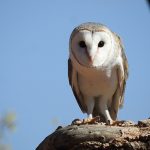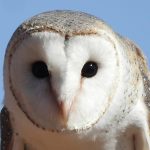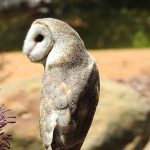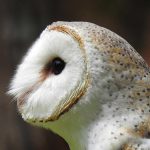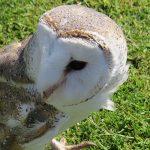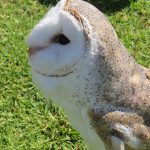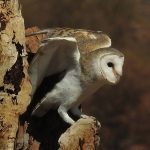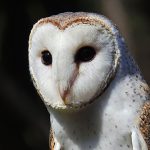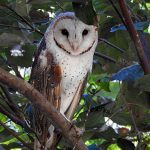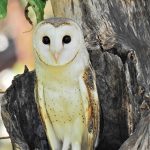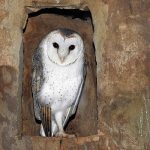BARN OWL
Guardian of the Night
The Barn Owl is a bird that stirs both awe and curiosity in anyone lucky enough to catch a glimpse of it gliding silently through the moonlit air. With its unmistakable heart-shaped face and ghostly plumage, the Barn Owl is a striking figure in the wildlife tapestry, particularly in Australia, where it is a widespread and much-loved nocturnal predator.
Vivid Description
Imagine an evening scene: a cool breeze drifts across a grassy paddock, and the soft, rhythmic chirping of insects fills the air. Suddenly, drifting almost soundlessly, a pale figure appears—a Barn Owl. Its wings, painted in shades of soft tan and golden brown flecked with dark spots, catch the last rays of twilight. The face, framed by a symmetrical ring of velvety white feathers, is turned downward, focused on any slight rustle in the grass below. Two deep, dark eyes convey a sense of intelligence and mystery, giving this owl a presence that feels almost otherworldly.
You might also notice the faint scent of earth and dry grass in the air, a reminder of how close these birds live to the landscape. As the owl lands, its talons grasp the rough texture of barn beams, blending effortlessly into the world of human agriculture and wilderness alike.
Global Distribution and Habitat
Barn Owls are true global citizens. They are found on every continent except Antarctica, thriving in environments as varied as:
- Open grasslands
- Farmlands and paddocks
- Marshes and wetlands
- Dry deserts
- Forest edges and woodlands
They have a particular fondness for nesting in old buildings, church towers, and hollow trees, often making use of spaces abandoned by humans.
Adaptations and Hunting
Barn Owls are the masters of nocturnal hunting:
- Vision: Their large, forward-facing eyes are designed for exceptional low-light vision.
- Hearing: Their heart-shaped facial disk channels sound directly to their ears, enabling them to pinpoint prey with stunning accuracy—even in total darkness.
- Silent Flight: Specialised fringed wing feathers minimise noise. As you watch a Barn Owl in flight, its progress is eerily silent, helping it to sneak up on rodents like mice, rats, and voles.
Imagine watching as an owl hovers briefly, listening intently to subtle movements, before dropping like a pale shadow to snatch its unsuspecting quarry.
Reproductive Life
Barn Owls are notable for their reproductive vigour:
- A typical clutch contains 4-7 eggs.
- Eggs are incubated for around 30 days by the female.
- Both parents work tirelessly to feed rapidly growing
owlets, which fledge and leave the nest within 8-10 weeks.
These families may return to the same nesting sites year after year if the location remains safe and undisturbed.
Conservation Status and Human Impact
While Barn Owls are secure globally, several local populations face challenges due to:
- Habitat loss (removal of old trees and derelict buildings)
- Pesticide use (impacting their prey and health)
- Road fatalities (as they hunt along roadside verges)
| Threat | Solution |
|---|---|
| Habitat Loss | Preserve old trees/buildings |
| Pesticides | Use alternatives where possible |
| Road Fatalities | Mitigate lighting and fences |
By offering nesting boxes and reducing chemical usage, communities can help ensure the continued presence of these extraordinary birds.
Cultural and Scientific Significance
Barn Owls have inspired stories for centuries, symbolising wisdom and mystery in many cultures. The mournful screeches that drift through the night add to their reputation, sometimes inspiring folklore about spirits and omens.
Scientifically, Barn Owls are invaluable. Their extraordinary adaptations reveal much about the evolution of nocturnal predators and the delicate balance between predator and prey.
Educational Insight and Conservation Message
Barn Owls are not just beautiful—they fulfil a vital ecological role by controlling rodent populations, supporting both biodiversity and agricultural health. By protecting these birds and their habitats, we preserve a natural balance that benefits wildlife and people alike.
Conclusion
Next time you glimpse a pale shadow gliding through the dusk or hear a haunting call on a quiet night, remember the Barn Owl. It is more than a symbol or a curiosity—it is a guardian of the night, a link in the chain of life, and a testament to nature’s ingenuity.
Let us act as stewards of these remarkable birds, ensuring their silent wings will grace the night for generations to come.

